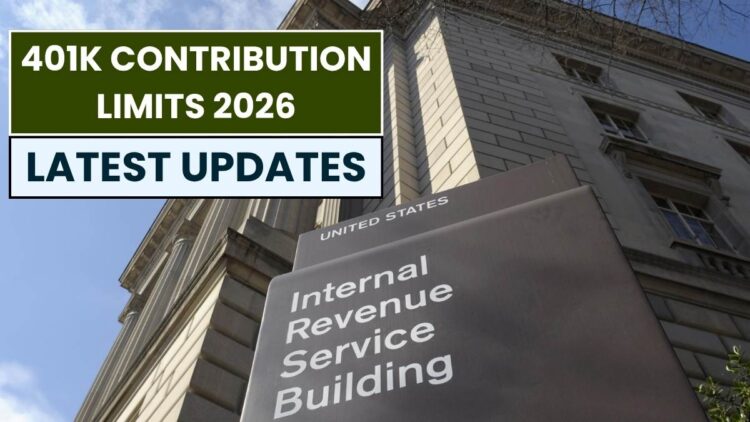The IRS will soon release the 401 (k) contribution limit for 2026, which will affect American workers planning for retirement. Along with the contribution limit adjustment, the workers will also see a key change in catch-up contribution under SECURE 2.0.
401k Contribution Limits 2026
The employees save and invest a portion of their salary through the 401 (k) employee-sponsored retirement plan savings plan, while getting tax benefits. Under the 401(k) retirement plan, we have two annual contribution limits: elective salary deferrals and overall contributions.
The IRS limits contributions to retirement plans to restrict high-income earners from taking advantage of the tax benefits. The IRS adjusts the contribution every year to match the cost-of-living and inflation. The contribution limit for the older workers (Catch-up contributions) will also be adjusted.
The contribution limit for 2026 is yet to be announced; however, based on current inflation, the experts believe the limit will increase by $1000 for 2026, that is $24,500 from $23,500. Here, you can check the projection of the 401(k) contribution limit:
| Retirement plan contribution limit | 2025 | 2026 |
| 401(k) employee contribution | $23,500 | $24,500 |
| Catch-up Contribution | $7500 | $8000 |
| Enhance Catch-up (age 60 to 63) | $11,250 | $12,000 |
| Overall contribution employee + employer | $70,000 | $72,000 to $73000 |
When to expect the 2026 401(k) contribution limit official announcement?
The IRS calculates the contribution limit for the retirement plans based on the CPI index, and the September 2025 report has yet to be released. The September 2025 CPI data will be published at the start of October 2025.
So, you can expect the agency to make the official announcement for the 2026 401(k) contribution limit by late October or November 2025. Last year, the agency announced the contribution limit on 01 November 2025, so be prepared, as we are just three months away from the changes becoming effective.
The employees now have to understand the key changes to the catch-up contributions under the SECUR 2.0 Act.
What is the new change in catch-up for the high-income earners?
Older employees who contribute more through catch-up contributions and try to save more before retirement should know the changes happening in catch-up contributions from 2026. Earlier this month, the Department of the Treasury and the IRS introduced new limits to the 401 (k) catch-up contributions for workers of age 50 and over.
If you are a high-income earner and age 50+, you must understand the following change to be applicable from Jan 2026:
- If you are earning more than $145,000 a year and your age is 50 or above, you will not be able to make catch-up contributions using pre-tax dollars. This means you will have to contribute using after-tax contributions, where you will pay taxes now, not on withdrawal.
- The income limit of $145,000 was indexed based on inflation, so it can change in the future.
- The new rule was enacted under the SECURE 2.0, which changed the retirement saving rules. It was supposed to be implemented in 2024, but it got delayed due to some technical issues.
- The new rule for catch-up contribution would be enacted from January 2026, but the agency says the retirement plan has until January 01, 2027, to fully follow this rule.
What should older workers do with the changing rules?
The older workers and high-income earners need to be prepared for the new rule and its effect on their retirement savings. Here’s what you can do to plan for the upcoming change to catch-up contribution.
- You should plan your taxes as your Roth catch-up contribution will be taxed if you earn above $145,000.
- Old workers with annual earnings less than $145,000 do not have to do anything, as the catch-up contribution rules for them will remain the same; you can use the pre-tax contributions.
- If you come under the age group of super catch-up contributions, you should take full advantage of saving a lot with catch-up contributions and secure retirement income as much as possible.
- The ROTH contributions allow you to get contributions and earn tax-free, as you pay taxes now, this will benefit people who expect to come in a high tax bracket.
- You need to check if your employer offers ROTH options; otherwise, you might lose your catch-up contributions benefits.
With the upcoming change in the Catch-up contributions, Americans have to recheck their tax strategies on retirement plans, investment allocations, and others. So, while keeping an eye on the upcoming announcement on the contribution limit for 401(k), review your retirement plan catch-up contribution.
Disclaimer: The 401k contribution limits for 2026 are shared for informational purposes only. Official limits and rules are determined by the IRS.



